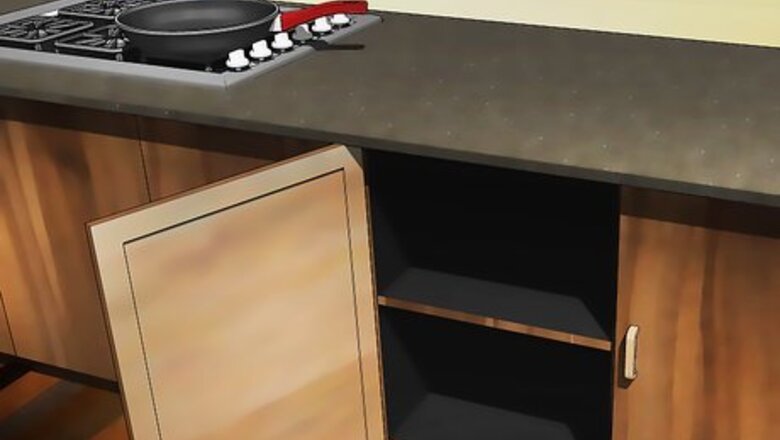
views
Storing Your Cookware
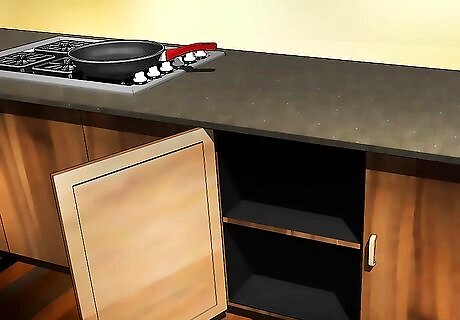
Find a dry area. The most important thing to remember when storing cast iron cookware is that the area you choose must be dry. Moisture is what causes cast iron cookware to rust, so it's important you store cast iron pots and pans somewhere dry. Many people leave cast iron cookware on the stove for storage. If you don't mind having a pot or pan out all the time, this is generally safe. However, remove cast iron cookware when using the stove. You do not want steam or water to accidentally get cast iron cookware wet. You can also store cast iron cookware in a cabinet or cupboard somewhere in your kitchen, as long as you make sure the area you choose is generally dry. Under the sink, for example, may be a bad idea. Leaky pipes could get a cast iron skillet wet, causing rust.
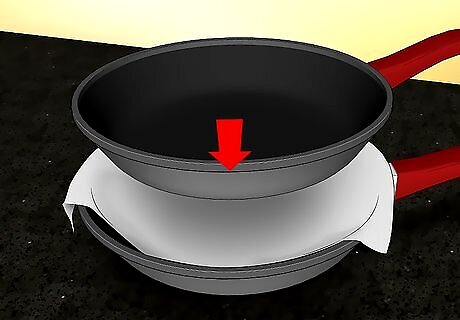
Place a piece of paper towel between stacked pans. You may have more than one cast iron pot or pan to store. If you're stacking cast iron cookware, always place a piece of paper towel between cast iron pots and pans. This prevents scratches and other damage.
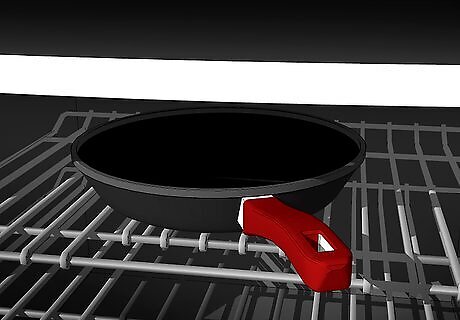
Store your cast iron cookware in an oven. Many people prefer to store cast iron cookware in an oven. This is generally a safe, dry place to keep your cast iron cookware when it's not in use. However, if your cookware has any wooden parts, you should not store it in an oven as this is a fire hazard. When removing cast iron cookware from the oven, make sure to use oven mitts. Cast iron cookware will get very hot inside the oven.
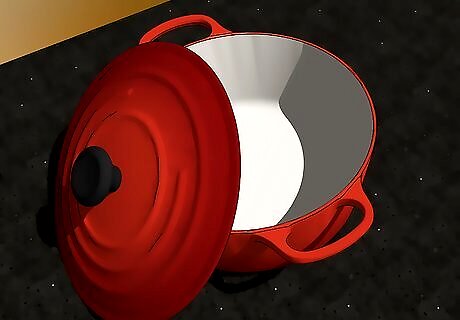
Remove the lid prior to storage. Proper ventilation is important when it comes to storing cast iron cookware. You want to make sure any moisture evaporates. Therefore, leave lids off when storing cast iron cookware. Lids can trap moisture, leading to problems like rust.
Preparing Cookware for Storage
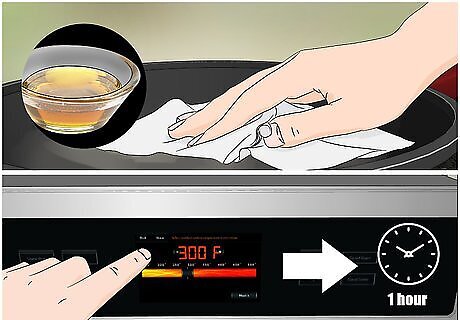
Make sure your pan is seasoned. Seasoning is a process that helps cast iron cookware become non-stick. A seasoned pan will be easier to clean and dry, making rust in storage less likely. If you have not already seasoned your cast iron cookware, do so prior to using and storing. You can season your pan in the oven or on the stove top. The process usually involves coating the pan with some kind of oil, like vegetable or canola oil. Some people prefer to use grease or lard for the process. To season in the oven, you would preheat your oven to 300 degrees Fahrenheit. Lightly coat the pan with oil, lard, or grease and let bake for an hour. Then, remove the pan with oven mitts and wipe off any excess oil, grease, or lard. To season on a stovetop, heat the pan on the stove top until it's hot to the touch. At a light layer of oil, grease, or lard. Leave the pan on the stove top for a few more minutes, then remove. Wipe away any excess oil, grease, or lard.

Clean your cast iron cookware properly before storing. You want to make sure your cast iron cookware is completely clean prior to storage. You should clean messes from a cast iron skillet right away, before they become set in. You should wash your cast iron cookware with hot water, never using soap. You should never allow cast iron cookware to soak in the sink, as this can cause rust. You can use a sponge or a stiff, non-metal brush to clean a cast iron pan after use. If there is a lot of set on food mess, add a cup of kosher salt to the pan. Take a pair of tongs and wrap a towel around them. Fill the pan with warm water, and scrub with the salt until the food comes unstuck. Then, rinse the pan thoroughly. If there is something stuck to the pan, you can also put some hot water into the pan and let it boil on the stove. Then dump the water out of the pan and add some salt. Dry out the pan with salt and scrape the pan with a spatula or a rag. You will notice that the salt will start to turn brown, picking up the grime.

Dry your cast iron cookware completely prior to storage. You should never store cast iron cookware that is still wet. This can easily lead to rust. You should dry the cookware as much as you can with a towel. Then, set the pan or pot on the stovetop at low heat. Leave for a few minutes, as long as it takes for the pan or pot to get warm. After a few minutes have passed, use a paper towel to rub the pan or pot with a small coating of lard, grease, or oil. Heat for 5 to 10 more minutes. Allow the pan or pot to cool. Wipe away any excess oil. Now, your pan or pot should be safe to store.
Removing Rust
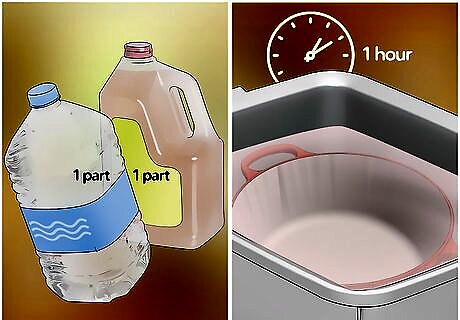
Soak the pan in vinegar. Even if you're careful to take every precaution, your cookware may rust. Cast iron cookware is made to last, so rust can usually be successfully removed. If your cookware is very rusted, doing a vinegar soak can help remove rust and restore the pan. Mix equal parts white vinegar and water. Make enough to fully submerge your pot and pan. You can soak the pan in a bucket or in your sink. Check the pan about once an hour. As soon as most of the rust is gone, you should remove the pot or pan from the vinegar. If you let cookware soak after the rust is gone, the vinegar will eat into the cast iron surface. Once you remove the pot or pan, rinse and dry before storing again.

Scrub out any lingering rust with soap. While soap should rarely be used on a cast iron pan, it can be helpful for scrubbing out any rust left after a vinegar soak. Use a mild detergent and warm water to scrub out any remaining rust. Never put cast iron cookware in your dishwasher. A green scrub pad or steel wool would work well. Once you've scrubbed out any remaining rust, dry the pan completely.
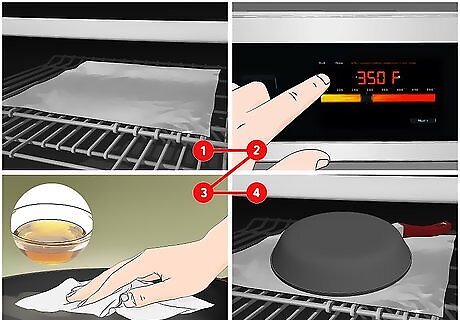
Re-season the pan. A vinegar soak will remove the cookware's seasoning. You should re-season your pan after removing rust. Re-seasoning methods do vary based on the type and size of cookware, so you may want to do some research first. However, many types of cast iron cookware can be re-seasoned with aluminum foil and oil. Place a piece of aluminum foil in the oven and then preheat to 350 degrees Fahrenheit. Rub vegetable oil over the entire pot or pan. Set the pot or pan upside down over the foil. This will catch any oil that drips down during cooking. Let the cookware bake for an hour, and then cool for 45 minutes.



















Comments
0 comment